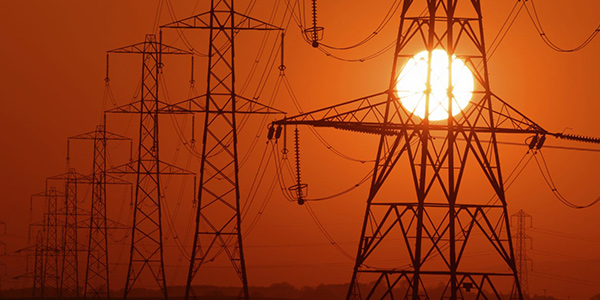In the face of another heat wave and raging wildfires, CAISO avoided rolling blackouts but declared Stage 2 emergencies on Saturday and Sunday after losing transmission and generating capacity without warning.
Sunday was “undoubtedly the most stressful grid day we had this year, maybe 10 years,” Vice President of Operations Eric Schmitt said in a media briefing Monday.
At midday Sunday, the ISO said it faced a 4,000-MW “mismatch” between supply and demand and could order rolling blackouts affecting millions of residents unless massive conservation efforts and aid from neighboring utilities allowed it to avert or limit outages.
If that had happened, it would have been the second time in less than a month that CAISO resorted to rotating outages to avoid jeopardizing the Western grid. The blackouts of Aug. 14-15, which affected more than 1 million customers, were the first time the ISO used its emergency powers in nearly 20 years. (See Theories Abound over California Blackouts Cause.)
A heat wave set record or near record temperatures across the West on Sunday, including 109 degrees Fahrenheit in downtown Los Angeles and 113 F in Las Vegas. Wildfires raging in Central and Southern California took transmission lines out of service, stranded hydroelectric and solar resources and fouled the air in major cities.
On Saturday evening, the ISO suddenly went from an energy warning to a Stage 2 emergency when fires near Fresno and in Southern California interrupted power flowing from a hydroelectric plant in the Sierra Nevada foothills and solar arrays in the Imperial Valley, said John Phipps, director of real-time market operations.
The fires cut off 1,600 MW, forcing CAISO to an emergency status that allowed it to borrow 300 to 400 MW each from the Los Angeles Department of Water and Power (LADWP) and the Sacramento Municipal Utility District (SMUD). Blackouts were narrowly averted.
About 600 MW of the lost power returned Sunday, Phipps said, but in the middle of the briefing, he said he had just learned another 500 to 600 MW had been lost because of fire at a plant.
Sunday’s peak demand was projected to exceed 49 GW, by far the highest load of the year, but it ended up being slightly more than 47 GW, still a record high for 2020, Schmitt said. Neighboring states struggling with the heat didn’t have much electricity to spare, he said.
On Sunday, Schmitt warned that when California’s solar power waned in the evening while demand remained high, severe shortfalls would occur. “We still haven’t been able to find enough energy to make up that shortage,” he said.
During the mid-August heat wave, Nevada’s NV Energy strained to serve load, especially in the Las Vegas area, and issued emergency alerts.
On Friday, FERC granted PacifiCorp temporary authority to make short-term sales of electricity to NV Energy during emergency conditions at CAISO’s 15-minute market LMP at the Palo Verde price node (ER20-2816). The sales would otherwise be prohibited by PacifiCorp’s tariff.
“Due to credible information about possible reliability problems, we find that the exercise of our discretion to grant this waiver in part is warranted,” FERC said.
Events of Sept. 6
CAISO predicted problems to start around 5 p.m. Sunday and grow worse until as late as 10 p.m. There was a 4,000-MW difference between forecasted supply and demand at 1 p.m.
Unless circumstances changed, CAISO said it would likely declare a Stage 2 emergency between 4 and 5 p.m. and move to a Stage 3 emergency, commencing blackouts, around 5 p.m., Schmitt said. Outages could have affected 2.5 million to 3 million customers, or about 7.5 million to 9 million residents based on average household size.
The Stage 2 emergency was declared later than expected at 6 p.m., when a high-voltage DC line linking California to Oregon was suddenly derated by 1,100 MW and adjacent AC lines became overloaded, causing CAISO to lose 1,600 MW in minutes, Phipps said.
Then a 260-MW generating resource tripped offline. Having lost 1,900 MW, CAISO was “close to the edge,” Phipps said.
It called on large-scale consumers to honor their demand-response contracts and limit consumption, taking 960 MW of load off the system, he said. LADWP and SMUD again supplied additional power, while residents did their part to conserve, he said.
CAISO did not have to progress to a Stage 3 emergency.
The weather forecast called for a cooling trend starting Monday but also high winds that Pacific Gas and Electric and other investor-owned utilities warned could lead to public safety power shutoffs (PSPS) to prevent wildfires. CAISO said it did not expect the PSPS events to impact its system.



